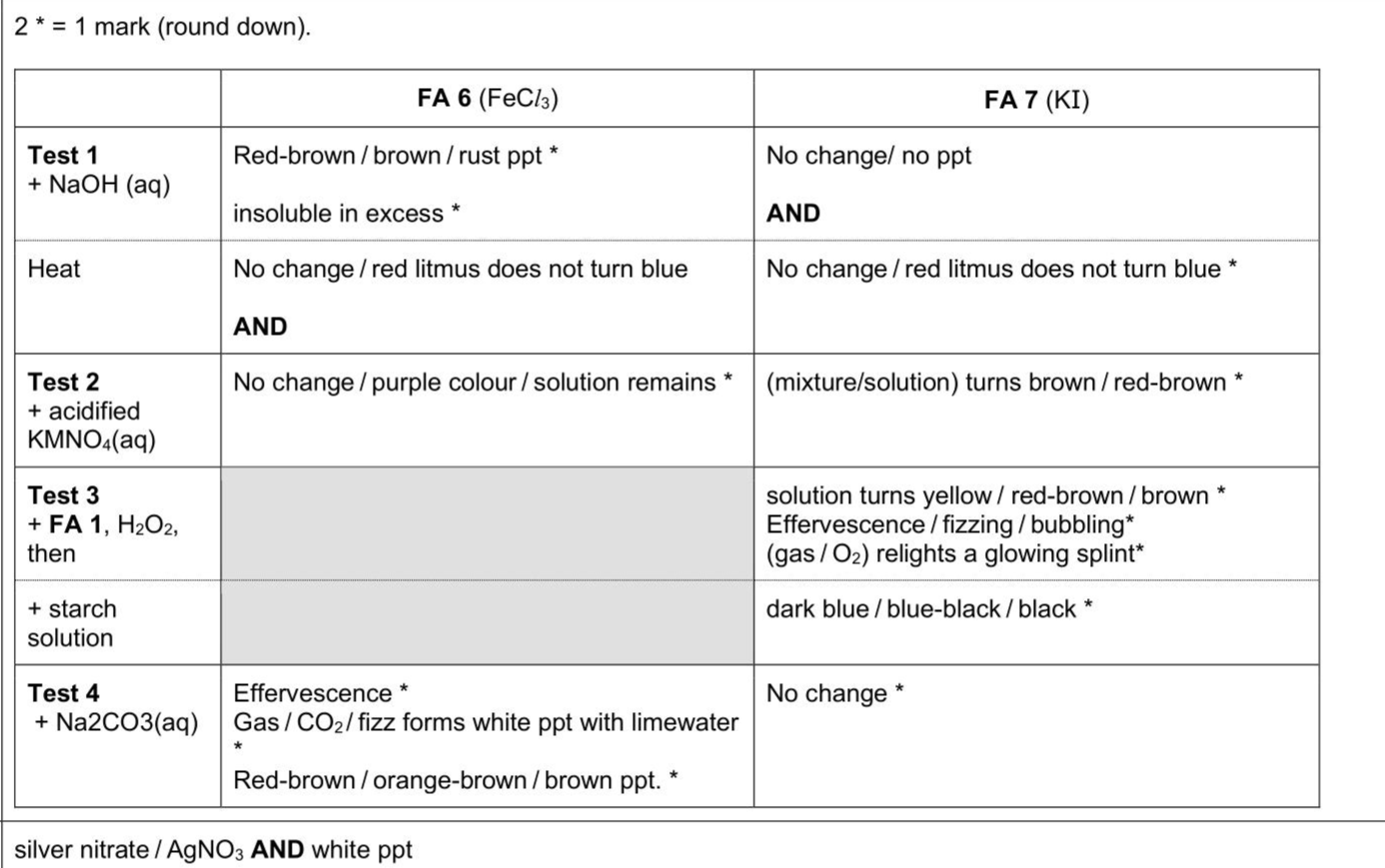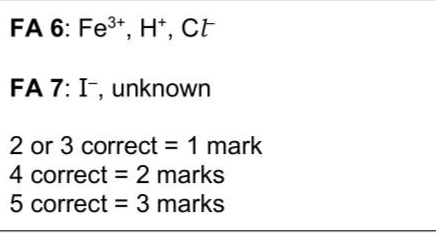(b)FA 6 and FA 7 are both aqueous solutions of salts.Neither solution includes an ion that contains sulfur. FA 6 contains two cations and one anion.Two of the ions are listed in the Qualitative analysis notes. FA 7 contains one cation and one anion.One of the ions is listed in the Qualitative analysis notes. (i)Carry out the following tests and record your observations in Table 3.1. Use a 1 cm depth of FA 6 or FA 7 in a boiling tube for Test 1.Use a 1 cm depth of FA 6 or FA 7 in a test-tube for Tests 2, 3 and 4. [6] (ii) The anion in FA 6 does not contain nitrogen. Select one further reagent to identify the anion present in FA 6. Carry out a test with this reagent and record your observations in Table 3.2. (iii) Give the formulae of the ions present in FA 6 and FA 7. If you are unable to identify an ion from your tests, write 'unknown.' The ions present in FA 6 are and and . The ions present in FA 7 are and
Exam No:9701_s25_qp_33 Year:2025 Question No:3(b)
Answer:


Knowledge points:
12.1.1 explain the lack of reactivity of nitrogen, with reference to triple bond strength and lack of polarity
12.1.2.1 the basicity of ammonia, using the Brønsted–Lowry theory
12.1.2.2 the structure of the ammonium ion and its formation by an acid–base reaction
12.1.2.3 the displacement of ammonia from ammonium salts by an acid–base reaction
12.1.3 state and explain the natural and man-made occurrences of oxides of nitrogen and their catalytic removal from the exhaust gases of internal combustion engines
12.1.4 understand that atmospheric oxides of nitrogen (NO) can react with unburned hydrocarbons to form peroxyacetyl nitrate, PAN, which is a component of photochemical smog
12.1.5 describe the role of NO in the formation of acid rain both directly and in their catalytic role in the oxidation of atmospheric sulfur dioxide
6.1.1 calculate oxidation numbers of elements in compounds and ions
6.1.2 use changes in oxidation numbers to help balance chemical equations
6.1.3 explain and use the terms redox, oxidation, reduction and disproportionation in terms of electron transfer and changes in oxidation number
6.1.4 explain and use the terms oxidising agent and reducing agent
6.1.5 use a Roman numeral to indicate the magnitude of the oxidation number of an element
Solution:
Download APP for more features
1. Tons of answers.
2. Smarter Al tools enhance your learning journey.
IOS
Download
Download
Android
Download
Download
Google Play
Download
Download
